5 Must-Read Novels for Your COVID Quarantine Book Club
These absorbing stories get you thinking more deeply about our troubled world

Looking for a good read while sheltering in place? Sierra reviews five newly released works of fiction that masterfully address themes ranging from Indigenous rights and the climate crisis to coming-of-age in a time of child poverty and xenophobia. These absorbing, thought-provoking stories not only entertain but also get you thinking more deeply about the ills plaguing our troubled world, and the resiliency with which even the most seemingly powerless among us can meet the moment, and transcend it.
The Night Watchman
By Louise Erdrich
Harper, 2020
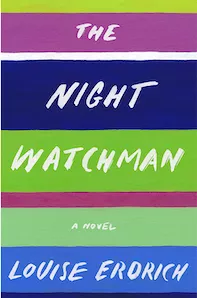
In the early hours of the morning, Thomas Wazhashk, a night watchman at a jewel bearing plant in the Turtle Mountain Band of Chippewa reservation of North Dakota, sits at his desk reading a copy of a new congressional bill. The bill, recently introduced by a member of the United States Congress, threatens to effectively terminate the existence of the Chippewa. “We have survived the flu pandemic of 1918 and fought in four or five deadly United States wars,” Thomas thinks while staring at the pages before him. “But at last we will be destroyed by a collection of tedious words.”
A few hours later, after falling asleep, he’s jolted awake by a banging sound: a white owl pecking against the window outside, its wings fully extended, plastered against the glass.
In this brilliantly executed novel based on true events, multidimensional characters cohabit a meticulously crafted world fraught by dispossession, where the cynical and the elite, the vulnerable, the resilient, and the spiritually revenant share a grand stage. The Night Watchman, set in 1953, is based in part on the true story of National Book Award winner Louise Erdrich’s grandfather Patrick Gourneau, who organized a grassroots movement against congressional efforts to withdraw federal recognition of the Chippewa tribe.
Like Thomas Wazhashk, Erdrich’s grandfather worked as a night watchman while also serving as chairman of the Tribal Advisory Committee for the Turtle Mountain Band of Chippewa. In 1953, the year before Erdrich was born, the US House of Representatives passed a resolution that would abrogate a century-old treaty with the Chippewa, terminate federal assistance to and federal recognition of the tribe, and make their land available for sale. Gourneau began a letter-writing campaign to fight termination and organized a delegation of local Chippewa to press their case in Washington, DC. They went on to defeat the legislation and save the tribe from termination.
Gourneau’s letters were compiled in a family archive. Then, two years ago, Erdrich—a member of the Turtle Mountain Band who has published more than 30 books, including Love Medicine, The Round House, and The Plague of Doves—began rereading them during a debilitating bout of writer’s block. She set aside the novel she had been wrestling with for a new story instead: The Night Watchman.
And what a story it is: Erdrich scrambles genres in a seamless marriage of history and fiction, nimbly pivoting from literary realism to tribal lore as she reimagines how a small band of Native activists fought to save their tribe from termination while grappling with the violence, poverty, and predation tearing at the social fabric of their community. Along the way, we follow an expanding chorus of characters whose stories progressively intersect and interplay in a sonorous narrative kaleidoscope. Patrice, a young Chippewa woman, takes a bus to the Twin Cities to search for her missing sister, Vera, and Vera’s baby. Thomas barely sleeps as he scrambles to assemble a delegation to go to Washington, DC, to stop Utah senator Arthur V. Watkins from pushing through legislation that will terminate the Chippewa, all while experiencing visions of a ghost named Roderick. Wood Mountain, a boxer with a crush on Patrice, pummels and is pummeled in turn during a match organized to raise a few hundred dollars to fund the Turtle Mountain delegation’s trip to DC.
The novel percolates with characters, yet Patrice, along with Thomas, both of whom work at the jewel bearing plant, anchor the story. The breadwinner for her mother and brother, Patrice is her impoverished family’s primary sentinel against a drunk father. While searching for her sister, Patrice is swept into an urban dystopia where hustlers and drug addicts look to prey on young Native women from the reservations. Yet Patrice, or Pixie as her companions like to call her, outwits and outmatches them. Still, signs of abuse, moral decay, and sexual violence abound, and Vera’s disappearance constantly haunts the story.
Scenes shift effortlessly from the touching to the mystical to the horrific: Thomas’s wife, Rose, glancing up from a cup of coffee late at night, her eyes meeting his (“He looked back at her and everything else fell away. It was only Rose and always Rose. They held each other’s eyes for so long the tension made them laugh.”); Patrice seeing her father’s ghost darting through the trees late at night (“His voice flew at her, whining and bending the air. She stood as it whipped the fire into tall flames. It thrashed the bare branches and drove clouds to scud like gray smoke across black space. His voice was trying to pull the life out of her.”); an abandoned bedroom floor, littered with trash and dried blood, a dog collar, and chains. Some of the most notable characters in the novel are the ones we never get to meet: the missing and murdered Native women ever present in the background.
The story behind The Night Watchman is over a half-century old, but it eerily echoes our contemporary moment. At a hearing in DC to determine the fate of the Chippewa’s federally protected status, Senator Watkins quizzes Thomas and his delegation about the purity of their bloodlines, recalling Donald Trump’s racist “Pocahontas” attacks on Senator Elizabeth Warren (Erdrich also points out in the novel’s afterword that the Trump administration has revived the old termination policies in a new attempt to terminate the Wampanoag, the tribe that first welcomed the pilgrims and invented Thanksgiving.)
In our modern age, with its plague of political zeal, name-calling, and white supremacy, there are still those looking to sow division and destroy lives through “a collection of tedious words.” And yet . . . The Night Watchman demonstrates that even the most seemingly powerless among us can meet the moment and transcend it.
“If you should ever doubt that a series of dry words in a government document can shatter spirits and demolish lives, let this book erase that doubt,” Erdrich writes in the afterword. “If you should be of the conviction that we are powerless to change those dry words, let this book give you heart.”
—Jonathan Hahn
Sharks in the Time of Saviors
By Kawai Strong Washburn
FSG, 2020
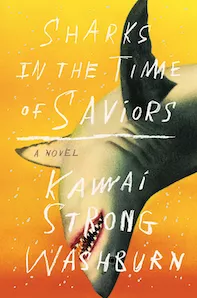
Hawaiian author Kawai Strong Washburn presents the archipelago where he grew up as a superabundant place defined by proud ancestors and mythical spirits, where things unseen are viscerally present—but also marred by colonialism, poverty, and hopelessness. His debut novel juxtaposes the gritty realities of life for a contemporary working-class Filipino-Hawaiian family against the mysticism of the Native culture that helped shape them.
The Floreses are struggling with the collapse of their sugar cane plantation. On a family glass-boat ride to Honolulu to escape the Big Island’s poverty and savor a taste of white (haole) tourists’ experience of Hawaii, seven-year-old Noa falls overboard and is consumed by sharks. Or so it seems. Eventually, the sharks—divine symbols of protection for Indigenous Hawaiians—return Noa to the boat, unharmed, and word gets out about the miracle shark boy.
Noa’s parents, Malia and Augie, interpret the event as further evidence that the gods imbued their son with special powers at conception (an event interrupted by night marchers; i.e., a parade of ghosts of the long-dead ali’i, or noble Polynesian kings, through the lush Waipi’o Valley). Noa goes on to quell anxious animals; the most beautiful orchids spring from the dirt where he plays in the backyard. At one point, the boy appears to heal an accident victim’s injuries.
Noa doesn’t fully comprehend his gift, which becomes both a blessing (ill, troubled Hawaiians clamor at the Floreses’ front door, offering the family cash for consultations with the boy) and a burden. Noa is not only haunted by the suffering he has to feel when he heals others; he is alienated from his jealous older brother, Dean—a basketball wunderkind with a penchant for getting into trouble—and his fiercely smart and sarcastic little sister, Kaui.
The story unspools from the rotating first-person perspectives of the family’s five members, each voice distinct and delightful in its own idiosyncrasies. One by one, the kids flee home for the mainland, where they wrestle with assimilation, heartbreak, drugs, and the law. Each, however, continues to feel tenuous glimmers of connections to their ancestral destiny, and to the sharks.
After Noa’s overconfidence in his gifts leads to a disaster at his job as an EMT, he returns home and sets off on a quest into the rainforest to better understand himself and the land so deeply embedded in his psyche. Noa’s journey comes at a hefty price—his family must weather tragedy, mental illness, unemployment, and incarceration. It’s only when the Floreses get back to their literal roots—in the form of a self-sustaining farm—that they’re able to make sense of and harness Noa’s gift, and in doing so, find an inherent abundance within themselves.
I picked up this novel shortly after experiencing the Big Island of Hawaii for the first time. I’d struggled to make sense of the awe inspired by its draconian cliffs, misty waterfalls, technicolor reefs, hot mossy rainforests, feral pigs and horses, the ancient myths and lore that felt somehow alchemized into the lava-drenched landscape. Yet I also felt the toll of all those manicured resorts, military bases, Christian missionaries, corporate banana plantations—the various haole ways and hallmarks of late-modern capitalism that continue to pave over and manipulate Hawaii’s rich culture. Washburn’s bewitching writing, with its magically real flourishes, beautifully encapsulated, and deepened, my own impressions.
This radiant, lively novel deconstructs the role of saviors, miracles, and divine intervention—deftly demonstrating that those powers lie within us all. And that they can be channeled so as to transform and purify ourselves as well as the place we call home.
—Katie O'Reilly
The Glass Hotel
By Emily St. John Mandel
Knopf, 2020
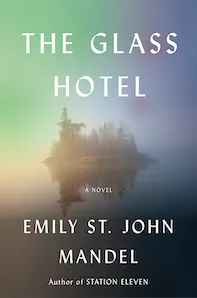
At first, The Glass Hotel uses the natural world in a similar way to how F. Scott Fitzgerald used it in The Great Gatsby—as a scenic backdrop for extreme wealth, like the velvet case that a jeweler would use to display a diamond ring. The hotel the book is named after is a sleek hideaway on the north end of Vancouver Island, accessible only by boat.
“It’s wilderness,” says the hotel’s manager to a man interviewing for a job there, “but let me tell you a secret about wilderness. Very few people who go to the wilderness actually want to experience the wilderness. Almost no one.”
Fans of Station Eleven, the previous novel by Emily St. John Mandel, will find some similarities between the two. Even if there’s no flu pandemic that brings about the collapse of society this time around, there are still childhoods spent on islands in the Pacific Northwest, dramatic reversals of fortune, powerful and duplicitous men, deeply eccentric art projects, radical career changes, spare, elegant prose, and a large cast of characters ping-ponging off each other over a period of several decades as the connections between them are gradually revealed. And while not everyone makes it to the literal wilderness, every character eventually finds themselves wandering through in a place that they had not anticipated, without a map.
There’s no pandemic in The Glass Hotel, but there’s still an apocalypse—the more familiar one that unfolded across the United States in the years since the 2008 financial crisis. It affects every character in different ways. One couple loses their retirement savings, abandons their home to foreclosure, and takes to the road in the RV that once felt like a frivolous purchase, taking on work wherever they can find it, filling packages at Amazon fulfillment centers. These sections also feel eerily Fitzgerald-like—while he’s famous for being a chronicler of jazz-age excess, he also wrote lyrically about the people and the landscapes that were the casualties of that wealth, like the Valley of Ashes that lies in between Gatsby’s mansion and Manhattan (which was based on a real coal ash dump in Queens).
In The Glass Hotel, nature is a place that people escape to, but only as much as their income allows it. The places that bring some measure of peace to its characters aren’t the total wilderness of more conventional environmental literature, but places that manage to be wild despite the intrusions of humans—the oceanic waters that container ships move through, or the beach in central California that the RV-dwellers wind up settling near for the summer, which St. John Mandel describes in a way that will be familiar to anyone who has ever loved a dirty beach or a degraded vista.
South of the beach access road, people rode ATVs over the dunes and the ATV engines sounded like bugs from a distance, a high buzzing whine. Ambulances drove down the beach to collect ATV drivers three or four times a day. But north of the road the beach was quiet. Leon loved walking north. There wasn’t much between Oceano and Pismo Beach, the next town up the coast. This lonely stretch of California, forgotten shoreline, sand streaked with black. The land here was dark with tar. In the evenings there were flocks of sandpipers, running over the sand so quickly that they gave the illusion of hovering an inch off the ground, their legs blurred like the animals in a Road Runner cartoon.
These descriptions are all just small facets of a larger book. Like The Great Gatsby, The Glass Hotel doesn't foreground its environmental themes. But—also like The Great Gatsby—it illuminates the ways that people actually experience the natural world throughout their lives: as a luxury, but also as a job, as a barrier between the self and others, and as a reprieve.
—Heather Smith
The Freedom Artist
By Ben Okri
Akashic Books, 2020
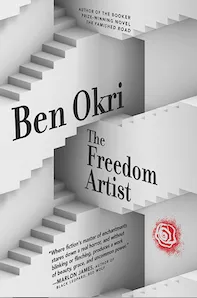
When I first read Ben Okri’s The Freedom Artist, I wasn’t quite sure what to make of it. The book itself isn’t dense, but the story is complex, layered, and subtle in its critique of how modern society warps our individual interpretations of our collective reality. This is a book with which to sit, reflect, and engage time and time again. Each read teases out another truth, another metaphor, another example of what it means to feel restricted by social norms.
With a slow burn arc emblematic of Toni Cade Bambara’s The Salt Eaters, and prophetic warnings of apocalypse akin to Octavia Butler’s The Parable of the Sower, The Freedom Artist offers a contemplative look at post-truth society. Okri, one of the foremost post-modernist Nigerian authors, leads the reader through a world that can only be described as a prison. While we don’t know in what time period the story is set, the reader is thrust into a dystopian society where authorities control the truth, and citizens are not allowed to ask questions, lest they betray the will of the state.
The story follows the radical awakening of two different parties: Karnak, whose lover, Amalantis, has been arrested for asking a question, and Mirababa, a young boy whose grandfather remembers the stories of old, long before the government controlled the distribution of information. Like the precolonial African griots, Mirababa’s grandfather attempts to pass on this storytelling tradition to his grandson, noting the necessity of old myths to help people understand where they came from, and why asking questions is so important to the health of society.
Though sometimes heavy-handed with metaphor, Okri does an excellent job of tapping into the darkness of the human psyche. By interrogating the ways in which human beings so willingly ignore reality in order to cope with suffering, we see not only a personal but also a global struggle against authoritarianism akin to the themes posed in George Orwell's 1984. Okri does not leave any stone in society unturned, questioning the intentions of artists and philosophers who blindly follow the state’s will in pursuit of their own fame as well as the ways in which authorities pass on notions of false happiness to the citizenry. The Freedom Artist functions both as a critique on contemporary society’s willingness to capitulate to ignorance and an ominous warning of what is possible when people do not think for themselves.
While the conversation about human relationships to the natural environment is not a central element of The Freedom Artist, early on, Okri links the rise of oligarchical repressive regimes with ecological decline. On two opposite ends are the prison and the garden: The authorities try to convince people that they can only reclaim the garden through blind obedience within the prison. Throughout The Freedom Artist, Okri weaves in creation stories, effortlessly using magical realism and biblical mythology to postulate what it would look like for divine beings to rescue us from ourselves. Altogether, the question of the novel is this: What would it mean for us to take responsibility for our horrible parts? Is divine intervention the only way out of the prison? Or is there a way that we hold that divinity within ourselves and can be our own saviors from societal and ecological ruination?
Intensely spiritual and philosophically dense, The Freedom Artist is less of an easy beach read and more of a starting point for collective discussion about what we want out of our world.
—Ashia Ajani
Djinn Patrol on the Purple Line
By Deepa Anappara
Random House, 2020
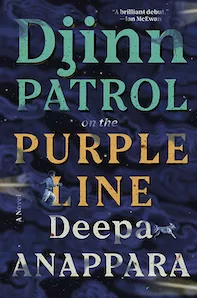
Jai learned everything he knows about “detectiving” from the crime show Police Patrol. He knows he needs an assistant. He knows he needs a dog to sniff out the bad guys. And he knows he needs to interview everyone who might know something about the crime.
The nine-year-old protagonist of Deepa Anappara’s debut novel, Djinn Patrol on the Purple Line, puts his detectiving skills to use when children start disappearing from his neighborhood. The basti, as it’s known, is an Indian slum adjacent to the hi-fi buildings where hi-fi people live. The authorities don’t care an ounce about the basti or the families living there, and they threaten to bulldoze homes if residents complain too much about the missing children.
“Kids around here disappear all the time,” one man tells Jai. “One day they’ll have too much glue and decide to try their luck somewhere else. Another day they’ll get hit by a rubbish truck and end up in hospital. Some other morning, they’ll be picked up by the police and sent to a juvenile home. We don’t make a fuss about anyone vanishing.”
Sinister and moving, joyful and perceptive, the novel’s greatest achievement is channeling the willful neglect that slum children experience daily. Anappara is well-positioned to tell this story: She spent nearly a decade working as a journalist in Mumbai and Delhi, where she reported on the ways that poverty and religious violence impact children.
Readers should consider starting with the afterword, which situates Anappara’s ambitions for the novel: to critique a political landscape increasingly harsh toward outsiders and minorities. She imagines the book as an antidote to right-wing fear-mongering of “others” stoked by leaders in India and around the world, as the novel draws readers into the utterly human experiences of children.
Not only is the book successful in its aim, but it is also a refreshing window into the world through a child’s eyes. Childhood slights, like Jai’s friend Pari outshining him at detectiving, can be as bruising as the world’s darker cruelties. Class perplexities don’t go unnoticed: Why were some goats wearing nicer sweaters than Jai's?
Fresh similes and metaphors propel the prose, creating a visceral reading experience. Right before one child gets snatched, Anappara writes, “The smog looked like the devil’s own breath.”
Smog and hunger are constant in Jai’s life. It is always shape-shifting, like the spirits—called djinns—that Jai suspects have snatched his friends. And his tummy grumbles ceaselessly, never satisfied by the midday meal at school or by the dal that his sister and mother cook every night.
The novel is permeated by themes of gender disparity and religious conflict. Jai’s sister, Runu, is the fastest runner in school but knows she can’t outrun what is expected of her: to help her mother with chores and to be a good wife and mother someday. “Her own dreams were inconsequential. It seemed to her that no one could see the ambition that thrummed in her; no one imagined her becoming someone.”
When more children disappear, most of them Hindi, rumors spread that Muslims are to blame. Jai’s friend Faiz, who is Muslim, becomes fearful for his brother, who has been accused of playing a role in the snatchings.
Hindi words and phrases regularly appear untranslated. Rather than interrupting the narrative’s flow, they infuse the story with intimacy, as though the reader is privy to meaning beyond what the English language can capture.
Anappara’s child characters are funny, endearing, and sharp. They ask the questions that adults seem consigned to ignore. The effect is a novel that feels truer than many stories in which adults are the only characters with anything worth saying. When Faiz is forced to move to a majority-Muslim basti, he tells Jai and Pari that he plans to sell flowers by the highway. “You’re seriously not thinking of being a rose-seller your whole life, are you?” Pari says. “You should join a school near your new basti.” Jai feels “as if a hundred butterflies are fluttering inside my chest. What is a whole life? If you die when you’re still a child, is your life whole or half or zero?”
—Krista Karlson
 The Magazine of The Sierra Club
The Magazine of The Sierra Club



